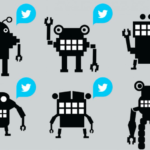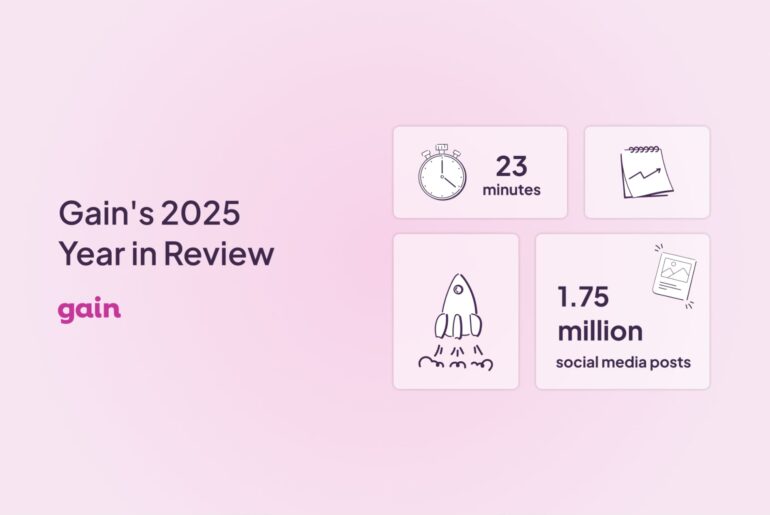It can be difficult to accurately estimate how much it takes to create different kinds of social media marketing content. Despite the difficulty, every marketing agency knows that the accuracy of their project timelines are a vital part of their dealings with clients. These timelines denote the budget the client agrees on in relation to the time and effort that your team will dedicate.
To properly estimate project timelines for various types of content, it’s best to find a reusable rubric like the five we’ll discuss below.
Clients often request a variety of content to be created – from lengthy evergreen content, long form content (such as guest posts, company blogs, or case studies), graphics, animated media, and much more. That’s why marketers need accurate timelines for each type of content so they can rest assured that their deadlines are on point and fair so both parties receive the ROI they deserve.
To figure out the best way to measure how much time your team is spending on social media marketing content, here are a few different methods for breaking up your marketing projects into more accurate timelines.

1. Parametric Estimating
Social media platforms tend to be the first marketing channels that customers see, so it’s often the base of any content marketing plan. Agencies regularly craft enough posts to publish across all client channels on a daily basis. So a good way to calculate the time necessary to complete these posts, that will be completed regularly and uniformly, is to use parametric estimating.
Parametric estimating can be used to measure marketing projects such as:
- Time writing social media posts
- Time creating marketing proposals
- Time creating monthly reports
Parametric estimation means estimating the time necessary to complete one item (a post/image/page/slide) and then multiplying that by the quantity you’ll need to make per day or week, multiplied by the number of weeks or months that the content is needed. For example, writing the copy for one social media post takes 5 minutes, multiplied by 15 posts per week, times four weeks to cover the month. The total time spent creating the content would be 300 minutes, or 5 hours per month.
Marketing materials that you can estimate parametrically must be uniform in their structure and style so the time estimate for one applies to all.
2. Bottom-Up Estimating
Bottom-up estimation requires that you break up a project into key sections and then break up each section into more detailed tasks. If you’re not sure how specific your most detailed tasks should be, estimate what could be started and finished in a three hour period (approximately an afternoon) and make those your smallest tasks.
To do this, add up the time necessary for each incremental task to get the total time necessary to complete the entire project.
Bottom-up estimating can be used to measure marketing projects such as:
- Time spent creating infographics
- Time spent creating GIFs
- Time spent creating social graphics
- Time spent writing long form content
- Time spent creating promotional videos
Bottom-up estimation works well for bigger projects that are always new territory no matter how many times your team has done them before. There needs to be an attention to detail and enough knowledge of the brand and subject matter that the content feels like a thoughtful exploration on the topic. These projects tend to be standalone pieces of content that can entertain even with no context to the company who made it and help establish the creator as an industry expert. Therefore, a different approach to measuring the spent on these projects is needed.
3. Top-Down Estimating
Top-down estimation means that you create an overview of the project first, before looking at the tasks in detail. It also makes it easier to multiply the workflow over the amount times you’ll have to create this content. With top-down estimation you don’t have to get so specific that your timeline for the first company blog can’t be applied accurately to the next four company blogs. Instead, start by developing an overview of the content using past experiences creating a similar piece of content as a reference.
Top-down estimating can be used to measure marketing projects such as:
- Time spent writing social media posts
- Time spent writing newsletter copy
- Time spent creating company blogs
Every client needs captivating content to cover their social media channels, to reach those that subscribed to their mailing lists, and to be visible to those who visit their website. This type of content is appropriate for top-down estimating because it is created and published on a regular basis.
Your team likely has a tried and true workflow already that you can implement each time. And while the client, the target market, and the particular subject matter may vary per client, the general amount time and the process for creating the content is about the same.
4. Comparative Estimating
When you have a clear indication of the length of the content you need to create, use comparative estimating to note the time it previously took to do similar tasks and apply it to the current project.
Comparative estimating can be used to measure marketing projects such as:
- Time spent creating ad copy
- Time spent creating and sending email responses
For example, for social media ad copy, regardless of the product or the particular target market you’re trying to reach, it will always be between one and four sentences long for most social platforms. Since you can assume the length of the content just by knowing the type of ad you’re creating, comparative estimation works great to know how it should take. Draw on your experience for how long it took to write ad copy for other clients and apply that to any new ad campaigns.

How To Measure Time Spent on Revisions
When you measure the time your team plans to spend on content, you’d be a fool to omit the time spent on revisions that clients may request. These can go under or over your expectations depending on the client’s preferences and the client-agency relationship.
First, it’s important to note the types of content that might be subject to edit rounds. Projects where all you receive is a description of what the client has in mind and a purpose for the project – and there are no previous examples and no templates to use – can be the most challenging to measure. Your team is marching through uncharted territory, and thus, there is a likelihood that you might have to double back and try again until the content is exactly how the client wants it.
The three point estimating system works best in these situations. The three point estimating system builds in a cushion for uncertainty – one for the best case scenario, the worst case scene, and the scenario that seems most likely.
Judge these three time estimations based on how confident your team feels about their ability to complete the project and how much information the client provided about what they want. Note: even the best case scenario should include a round of edits for your content. In most cases, there is always at least one edit round.
The worst case scenario should factor in the most taxing amount of edits that lead to a successful outcome. For example, five to six edit rounds could be considered the worst case scenario because that’s a lot of back and forth before your team and the client reach an agreement.
Finally, make sure to allot some time spent on the mechanics of getting all this done. Writing lengthy emails inside long email chains to field inquiries and answer new client requests can eat into your team’s time. This is valuable time and effort that should be covered by your client. To gauge how much time orchestrating a new edit round would take, your team should assess the client’s email style and their attention to detail. They might be very chatty in emails or very quick and to the point. This will lead you to a pretty good estimation of how long you can expect to be held up in an email chain.

Lastly, Leave Some Room For The Unexpected
We’re naturally inclined to be optimistic about project timelines, requesting less time rather than more. However, it’s always good to leave a some wiggle room to deal with any unexpected surprises that could eat up valuable time.
The unexpected depends on the specifics of your agency. If your team members travel a lot, leave a little extra room for moments when team members can’t find a location with decent WiFi.
If your team is remote but stationary, leave a little room for miscommunication. Especially when teams are spread out across drastically different time zones. Sometimes a miscommunication that would take an afternoon to sort out in the same office space, can take an extra day when your team is remote.
Once you factor all of these components into your timelines, you team can feel confident that the schedules you provide to create social marketing content are supremely accurate. Do you have any other tips or useful ways teams can measure the time spent creating content? Share them with us in the comments.









